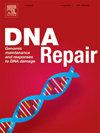洞察减数分裂DNA末端切除:机制和调控
IF 2.7
3区 生物学
Q2 GENETICS & HEREDITY
引用次数: 0
摘要
减数分裂产生的生殖细胞具有较少的基因组补体,大多数物种使用同源重组来促进精确的减数分裂染色体分离并在后代中产生遗传多样性。同源重组的关键步骤是DNA末端切除,其中DNA双链断裂(dsb)由核酸酶加工产生同源搜索和链入侵所需的3 '单链DNA (ssDNA)。非减数分裂背景下的DSB切除已被广泛研究,但减数分裂切除尚不清楚。我们在此综述了减数分裂过程中切除的机制和调控,包括与有丝分裂细胞中切除的异同。讨论了进行切除的核酸酶,以及切除调节因子,如DNA损伤信号和染色质结构。我们主要关注出芽酵母(Saccharomyces cerevisiae)和小鼠,这是目前可用的信息最多的,但也描述了其他物种的研究,这些研究指出了进化保护或分化在种系基因组完整性所需的关键过程中。本文章由计算机程序翻译,如有差异,请以英文原文为准。
Insight into meiotic DNA end resection: Mechanisms and regulation
Meiosis generates reproductive cells with a reduced genome complement, with most species using homologous recombination to promote accurate meiotic chromosome segregation and to generate genetic diversity among offspring. A critical step in homologous recombination is DNA end resection, in which DNA double-strand breaks (DSBs) are processed by nucleases to yield the 3′ single-stranded DNA (ssDNA) needed for homology search and strand invasion. DSB resection in nonmeiotic contexts has been extensively studied, but meiotic resection is less well understood. We provide here a review of studies elucidating the mechanism and regulation of resection during meiosis, covering similarities and differences from resection in mitotically dividing cells. The nucleases that carry out resection are discussed, along with resection-modulating factors such as DNA damage signaling and chromatin structure. We focus on the budding yeast Saccharomyces cerevisiae and on mouse, for which the most information is currently available, but also describe studies in other species that point to evolutionary conservation or divergence in this key process needed for genome integrity in the germline.
求助全文
通过发布文献求助,成功后即可免费获取论文全文。
去求助
来源期刊

DNA Repair
生物-毒理学
CiteScore
7.60
自引率
5.30%
发文量
91
审稿时长
59 days
期刊介绍:
DNA Repair provides a forum for the comprehensive coverage of DNA repair and cellular responses to DNA damage. The journal publishes original observations on genetic, cellular, biochemical, structural and molecular aspects of DNA repair, mutagenesis, cell cycle regulation, apoptosis and other biological responses in cells exposed to genomic insult, as well as their relationship to human disease.
DNA Repair publishes full-length research articles, brief reports on research, and reviews. The journal welcomes articles describing databases, methods and new technologies supporting research on DNA repair and responses to DNA damage. Letters to the Editor, hot topics and classics in DNA repair, historical reflections, book reviews and meeting reports also will be considered for publication.
 求助内容:
求助内容: 应助结果提醒方式:
应助结果提醒方式:


